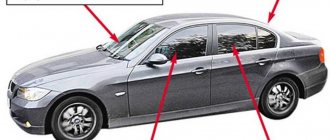Do you represent a Moscow company or are you a legal entity with a branch in Moscow? Our services will allow you:
- It is legal to conduct business without losing projected profits due to transport downtime caused by the protracted process of obtaining permits.
- Avoid an administrative fine for transporting dangerous goods without special permission ( from 400,000 to 500,000 rubles for legal entities - Article 12.21.2 of the Code of Administrative Offenses of the Russian Federation).
- Impeccably develop a vehicle route and quickly get it approved.
- In a short time, receive notification of the inclusion of the carrier’s vehicles in the Register of Categorized Vehicles of Rosavtodor ( a prerequisite for issuing a permit ).
- Prepare a complete package of documents for transmission to Rostransnadzor, eliminating all inaccuracies and errors that could lead to rejection of your application.
- Obtain permission to transport dangerous goods with minimal investment of time and money.
What is dangerous goods
Dangerous cargo is a substance that can harm the health and life of people, the environment and material assets in the event of an accident during its transportation.
The transport of dangerous goods is regulated by the European Agreement concerning the International Carriage of Dangerous Goods by Road (ADR or ADR).
The list of hazardous substances includes more than 3 thousand items. Each such substance has a special identification number. The list is divided into classes.
In Russia, the state standard GOST 19433-88 is in force, which divides dangerous goods into classes according to the level of danger. The requirements of this standard are developed in accordance with ADR.
Transportation not subject to licensing
In this chapter everything is very simple, and you don’t need to think and invent difficulties and problems for yourself; in two cases, transportation is not subject to a license:
- when transportation is carried out for personal purposes, that is, not for commercial or entrepreneurial activities.
- The weight of transported goods should not exceed 500 kilograms.
The two conditions that were given above and should interact mutually, and not separately. For example: You move objects over 500 kg, but for personal purposes, this is already work without a license, which entails administrative liability. There are also cases when a violation of the law occurs at the level of the criminal code. Be careful in your actions.
Classes of dangerous goods
class 1 - explosive materials; class 2 - compressed, liquefied and dissolved gases under pressure; class 3 - flammable liquids; class 4 - flammable solids, spontaneously combustible substances, substances that emit flammable gases when interacting with water; class 5 - oxidizing substances and organic peroxides; class 6 - toxic substances and infectious substances; class 7 - radioactive materials; class 8 - caustic and (or) corrosive substances; class 9 - other hazardous substances.
Each class is also assigned a subclass, category and degree of danger. Not every carrier can transport these substances.
Check the organization's fines
Can a license be refused?
In case of refusal, the reason is indicated. After it is eliminated, the documentation is submitted again.
Most often, the applicant is refused due to unreliable information in the documentation. There are difficulties in collecting documentation. Due to inexperience, the applicant may forget to receive something, but then it will only be possible to complete it.
It’s worse if the road owners refuse, then, if the refusal is justified, a new route will have to be laid out.
Rules for the transportation of dangerous goods by road
Transportation of dangerous goods must be organized taking into account the requirements established by the following regulations:
- European Agreement concerning the International Carriage of Dangerous Goods by Road of September 30, 1957 (ADR);
- Federal Law of November 8, 2007 No. 257-FZ “On highways and road activities in the Russian Federation and on amendments to certain legislative acts of the Russian Federation”;
- Rules for the transportation of goods by road, approved. Decree of the Government of the Russian Federation dated April 15, 2011 No. 272;
- Rules for ensuring transportation safety, approved. by order of the Ministry of Transport of Russia dated January 15, 2014 No. 7;
- Order of the Ministry of Transport of the Russian Federation dated July 4, 2011 No. 179 “On approval of the Procedure for issuing a special permit for the movement of a vehicle transporting dangerous goods on roads.”
- High-risk cargo can only be transported with a special permit (more on this below).
- The vehicle must have a yellow or orange flashing light on.
- The vehicle must comply with the requirements of the Technical Regulations of the Customs Union “On the safety of wheeled vehicles” (TR CU 018/2011) and section 9 of ADR.
- Vehicles transporting hazardous substances are equipped with a “dangerous cargo” identification sign.
- The speed of movement must be established when agreeing on transportation.
- The driver must undergo special training and obtain a certificate of approval to transport dangerous goods.
- The carrier is obliged to comply with the precautions outlined in Chapter 1.10. ADR.
An example of a car's front and rear designation:
Special markings on the sides of tanks, as well as on the sides of vehicles and containers:
Detailed information about inclusion in the Register
Article 31. Movement on motor roads of vehicles transporting dangerous, heavy and (or) large-sized cargo
1. Movement on motor roads of a vehicle transporting dangerous, heavy and (or) large-sized cargo is permitted with a special permit issued in in accordance with the provisions of this article.
2. International road transportation of dangerous, heavy and (or) large-sized cargo is carried out in accordance with the Federal Law of July 24, 1998 N 127-FZ “On state control over the implementation of international road transportation and on liability for violation of the procedure for their implementation.”
3. To obtain a special permit specified in Part 1 of this article, the following is required:
1) approval of the route of a vehicle transporting dangerous, heavy and (or) large-sized cargo, in the manner prescribed by part 4 of this article;
2) compensation by the owner of a vehicle transporting heavy cargo for damage caused by such a vehicle in the manner prescribed by Part 8 of this article;
3) the presence of a notification about the inclusion of a vehicle transporting dangerous goods in the Register of Categorized Objects of Transport Infrastructure and Vehicles and about the assigned category, as well as about the compliance of the transport infrastructure entity or carrier with the requirements in the field of transport safety.
(Clause 3 introduced by Federal Law No. 15-FZ dated 03.02.2014)
Thus, carriers who have not included their vehicle in the Register of Categorized Vehicles of Rosavtodor will not be able to obtain permission from Gosavtodornadzor to transport dangerous goods on federal roads of two or more regions.
Due to the fact that only Rosavtodor, located in Moscow, is involved in entry into the Register, and branches in the regions are not authorized to accept documents and include categorized vehicles in the Register, for carriers from the regions there are great difficulties in sending documents and filling out the necessary documents and inclusion in the Register, Rosavtodor also refuses to enter a categorized vehicle into the Register if the documents are filled out incorrectly, thus, entry into the register can take up to several months and transport downtime occurs.
Our specialists will help you receive notification of inclusion in the Register of Categorized Vehicles of Rosavtodor as soon as possible.
The price is 5 thousand rubles for each car.
Duration 1-3 months.
Documents required for the transport of dangerous goods
- special permit for the transportation of dangerous goods by road (for high-risk goods);
- certificate of vehicle approval for the transportation of dangerous goods;
- certificate of driver training for the transportation of dangerous goods;
- instructions for the driver, responsible persons, accompanying person on the rules of transportation;
- waybill with cargo markings;
- cargo safety data sheet;
- waybill;
- contract of carriage.
Checking fines for legal entities. persons
Try for free
Why do we need a license at all? Is it possible without one?
Of course, many applicants have repeatedly thought about this question, and they would like to step over this step, but it’s impossible, and we’ll try to explain why.
A license is a document that confirms that an individual and legal entity have full right and professionalism to transport passengers, which meets the requirements specified in the regulatory legal acts of the Russian Federation.
If you have a license, it is confirmed:
- The carrier can ensure the complete safety of passengers, and none of them need worry about their safety and security.
- The passenger transportation service complies with the law of the Russian Federation.
- The driver has the necessary experience and positive experience in this field.
The specified document is issued without fail only for the internal transportation of passengers, if their number does not exceed eight people.
And finally, I would like to inform you that the requirements in this activity are still imposed on employees, and they must meet them:
- The driver must work under an employment contract or contract and must have a driver’s license and driving experience.
- Technical and engineering personnel must have the required passes.
- Must undergo a medical examination regularly.
Here in this chapter, all the listed requirements are mandatory, but for each type there is also a detailed list of its requirements.
Requirements for drivers to transport dangerous goods
To drive a car with dangerous cargo, the driver must complete a training course at a specialized training center and receive an ADR certificate of preparation for the carriage of dangerous goods of international standard.
The certificate contains information about exactly what hazard class the driver can transport. It depends on what training course you completed.
Training to transport hazardous substances can be completed by a driver with at least three years of continuous driving experience in the relevant category.
Without an ADR certificate, driving a vehicle to transport hazardous substances is prohibited.
Licensing of passenger transportation
It is important in this activity to comply with norms and rights in the process of transporting passengers, and they are:
- The carrier must provide for all relevant requirements and regulations provided for by law.
- Vehicles must be owned or leased by the carrier.
- The organization must have qualified employees who have been certified to ensure road safety.
- A license for this activity also implies that vehicles must be equipped to transport no more than 8 people, and of course, the license is issued for a period of 5 years and can be extended.
I would also like to add that along with the license, a card is issued at the same time, which must always be with the driver who transports passengers.
Requirements for a vehicle to transport dangerous goods
Dangerous goods can only be transported on special vehicles that are manufactured or retrofitted in accordance with regulatory documents.
You must also first obtain a certificate of approval of the vehicle for the transportation of hazardous substances.
On January 10, 2021, the updated regulations for issuing such a certificate came into force.
To obtain permission to drive a vehicle, you need:
- Contact the traffic police department with the following documents:
- statement;
- identification document of the applicant;
- power of attorney or agreement if the applicant is a representative of the owner of the vehicle;
- tank type approval certificate (for tanks);
- certificate of testing and (or) inspection of the tank indicating the list of substances approved for transportation (for tanks).
Until January 1, 2021, it is not necessary to present certificates for tanks (Resolution of the Government of the Russian Federation of March 16, 2021 No. 285).
- Provide the vehicle for visual inspection.
The official will check it for compliance with the requirements of the legislation of the Russian Federation, the requirements of ADR and the information specified in the documents.
- Receive a certificate of admission.
According to clause 20 of the regulations, the procedure should not take more than 3 hours.
There is no state duty or other payment, so obtaining permission to transport dangerous goods is free.
The issuance of a certificate may be refused on the basis of:
- unreliability of information in the submitted documents;
- lack of information about the passed technical inspection at EAISTO;
- failure to present the car for inspection;
- unauthorized changes to the vehicle design;
- discrepancies in vehicle markings (body number, engine number, etc.).
The certificate is valid for 6 months. In this case, the validity period of the certificate cannot exceed the validity period of the technical inspection.
For example. The technical inspection will expire in three months. The permit will also be issued for 3 months. If the next technical inspection is due in eight months, the permit will be valid for 6 months.
What is the validity period and renewal procedure?
This permit for the delivery of dangerous goods will be valid according to the expiration date established after technical inspection, which is exactly 6 months. When the next analysis is planned in 1 month, then a related certificate is issued for the same period.
Then you need to resubmit the papers to the authority in order to renew the documents. Then you should bring the previous certificate to the authority so that the employees can re-affix the appropriate mark there.
But with the time frame regarding the course, the situation is completely different. Repetition of training is not necessary only if the person has worked in the specified profile for all 5 years and has extensive experience. But if for some reason the person in charge changed her profession and moved into another field of activity, then the exam will have to be taken again. This is the central difference, and the rest of the order remains the same as when it was first received.
Permission to drive a vehicle with dangerous cargo
Transportation of dangerous goods classified as high-risk goods according to the European Agreement on the International Carriage of Dangerous Goods by Road (ADR) is permitted with a special permit (clause 1.1 of Article 31 of the Federal Law of November 8, 2007 N 257-FZ).
The list of high-risk cargo is presented in Table 1.10.5. ADR. Such cargo includes, for example:
- explosives and products (pyrotechnics, trinitrotoluene, hexogen);
- flammable liquids (acetone, gasoline, ethanol, kerosene, acids);
- flammable gases (oxygen, natural gas);
- liquid oxidizing agents (hydrogen peroxide, ammonium nitrate, potassium permanganate);
- toxic substances (carbamate-based pesticide);
- radioactive materials (products made from natural uranium, objects with surface radioactive contamination);
- corrosive substances (sulfuric acid, liquid acid batteries).
You can obtain permission to transport especially dangerous goods for a car that was previously included in the register of categorized vehicles of Rosavtodor (Article 31 of the Federal Law of November 8, 2007 N 257-FZ).
The procedure for issuing a special permit is established by Order of the Ministry of Transport of the Russian Federation dated July 4, 2011 No. 179. A permit is issued at the Rostransnadzor office at the place of registration of the applicant. You can send an application with copies of documents by mail or fill it out on the government services portal. A sample application is in Appendix No. 2 to the Order.
List of documents attached to the application:
- a copy of the STS or car rental agreement;
- a copy of the certificate of approval of the vehicle for the carriage of dangerous goods;
- a copy of the driver’s certificate of approval to transport dangerous goods;
- power of attorney, if it is not the owner of the vehicle who is applying, but his representative.
In addition, you need to provide a diagram of the transportation route with parking and gas stations. As well as information about the cargo being transported: name, description, class, UN number.
The authorized body verifies the completeness and accuracy of the information. Checks compliance of technical characteristics of transport with safety requirements.
As a result, the owners of the roads along which the route passes are sent an application for approval or the issuance of a permit is refused.
Reasons why a permit may be refused:
- the route does not pass along federal roads;
- non-compliance with the requirements of ADR to ensure the safety of transportation of dangerous goods;
- not all documents are presented or they are not reliable;
- There is no information about the inclusion of the vehicle in the register of categorized vehicles.
State duty in accordance with paragraph 111 of Art. 333.33 of the Tax Code of the Russian Federation will be 1300 rubles.
Compliance with the rules for the transportation of dangerous goods is monitored by the State Traffic Inspectorate and Rostransnadzor. Violators bear administrative liability.
Information required to create a package of documents:
1. Information about the applicant:
- applicant's name, legal and postal address, location and telephone/fax, email address, INN, OGRN, manager, full name.
2. Route for transportation of dangerous goods:
- The applicant's proposed route for the vehicle.
- Name, address and telephone number of the shipper and consignee.
- Addresses and telephone numbers of intermediate points where, if necessary, the cargo can be delivered (name of organization).
- Proposed parking areas.
- Fuel refueling points (if necessary).
3. Information about the dangerous cargo being transported:
- Class, UN number.
- Name and description of the cargo being transported.
Violations and fines for incorrect transportation of exhaust gases
As noted by traffic police officers, the most common violations in the field of transportation of dangerous goods are non-compliance of the vehicle design with the requirements and the lack of permits.
Liability for these violations and failure to comply with other requirements for the transportation of hazardous substances is established by Article 12.21.2 of the Administrative Code.
Responsibility is provided for the transportation of dangerous goods in the absence of:
- driver training certificates;
- vehicle approval certificates;
- special permission for transportation;
- emergency information card;
- compliance of the vehicle design with the requirements for the transit of dangerous goods;
- danger signs;
- emergency response equipment;
- conditions for the movement of hazardous substances;
Administrative fines in these cases are set in the following amounts:
- for drivers 2-2.5 thousand rubles or deprivation of rights for 4-6 months;
- for officials 15-20 thousand rubles;
- for legal entities 400-500 thousand rubles and detention of the vehicle.
For other violations, fines are imposed in the following amounts:
- for drivers 1-1.5 thousand rubles or deprivation of rights for 4-6 months;
- for officials 5-10 thousand rubles;
- for legal entities 150-200 thousand rubles.
Individual entrepreneurs bear administrative responsibility as officials.
For example, for the absence of an ADR certificate from an employee of an organization responsible for organizing transportation, the company will be liable in the amount of 150-200 thousand rubles, and the official himself will pay 5-10 thousand rubles.
Checking fines for legal entities. persons
Monitor fines, receive a daily report on new found fines and pay them automatically
Try for free
How to get: step-by-step algorithm
First you need to collect the entire package of documents .
Then submit an application to Rostransnadzor . It can be done:
- personally;
- through a representative;
- by fax (it is advisable to call back and clarify that the documents have been received);
- by registered mail with a list of attachments;
- through the government services portal.
The application states:
- Company name;
- information about the car;
- and route;
- location, telephone and fax of the organization;
- TIN;
- OGRN;
- date of application.
A description of the cargo and additional information is attached to it :
- Who sends the goods, address and phone number of the organization.
- Similar information about who will receive it.
- Emergency phone numbers (along the route).
- Where can you drop off cargo in case of unforeseen situations?
- Where are the parking lots planned (if any).
- And gas stations.
Attention! Both the application and the annex to it are filled out on special forms.
The employee checks whether the application is drawn up correctly and whether all documents are collected . After this, the request is recorded in a special log. In this case, the registration number and information from the application are recorded .
Reference! If an application is submitted through the government services website, it is automatically registered there.
Then the verification of information and technical characteristics . , three days are allotted for this . For international ones, the following is additionally checked :
- Compliance with the European Agreement (ADR).
- That the route is the shortest possible.
- If possible, travel on paved roads.
- And far from specially protected areas.
Therefore, the period is increased to five days . If the requirements are not met, the request is refused. And if they do qualify, the review procedure differs for domestic and international shipments.
In the first case, the department generates applications to road owners.
Important! Sometimes it happens that an event with a large crowd of people (concert, sports competition, etc.) is planned not far from one of the roads. Then Rosavtotrans requests an alternative route.
Applications indicate:
- number and date;
- to whom it is sent;
- route;
- cargo information.
A business day
is allotted for registering such requests . No later than four days later , answers must be given: approval or refusal.
Based on these responses, it is decided whether to grant or deny permission. This should take no more than two days .
No coordination is carried out for international routes . Six days are allotted for consideration of the application .
Then, during the working day, the permit is issued. The decision will be announced within the same period.
When obtaining a license for transportation by rail or water, as well as for loading, another step is added.
After accepting the application, Goszheldornadzor employees will organize an on-site inspection . They look:
- does the transport meet all requirements;
- Do employees have the necessary diplomas and certificates of advanced training?
For information on how to check a taxi license, read the article at the link.
The decision to issue a license for transportation by rail or water (as well as for loading) is made within 45 days after receipt of the application . No later than three working days , it is issued or sent to the applicant.
How to obtain a Rostechnadzor license to operate hazardous production facilities can be found in the article at the link.
Is it possible to pay a fine for dangerous goods at a discount?
Yes, the 50% discount is valid for 20 days from the date of delivery of the resolution. In order not to miss paying traffic fines, you can use a special service for monitoring fines for legal entities.
The service automatically monitors the appearance of new fines from the State Traffic Safety Inspectorate, MUGADN, AMPP, MADI, Platon in the state information system and sends notifications about payment deadlines with a discount. The service allows you to automatically upload fines to the organization’s accounting system and pay them from the company’s current account.
according to article
Write to our lawyer and he will help you understand automobile legislation. We will consider controversial situations and tell you how to act according to the law.
Don't miss new useful publications
We will tell you about the intricacies of the legislation, help you understand it and tell you what to do in controversial situations.
Can a license be revoked?
The main grounds for suspension and revocation of a document are fixed by legislative acts and can be applied for relevant violations. For example, such cancellation often occurs when drivers transfer the received permit to other individuals or legal entities, and this is not allowed.
In case of withdrawal of a paper, the owner will certainly be informed about this within 7 days from the date of the decision. Then, within 10 days, the unscrupulous carrier is obliged to return the disputed document and license cards to the place of issue.











